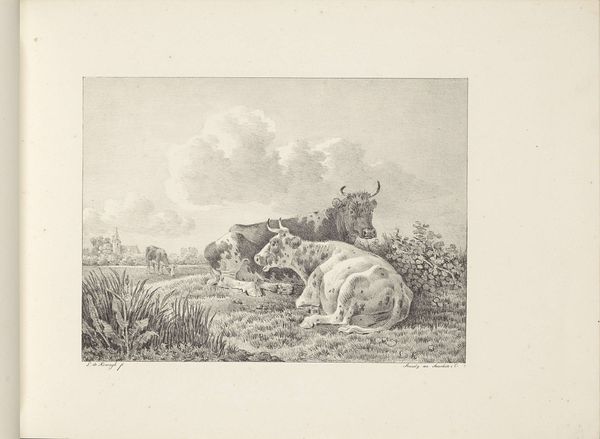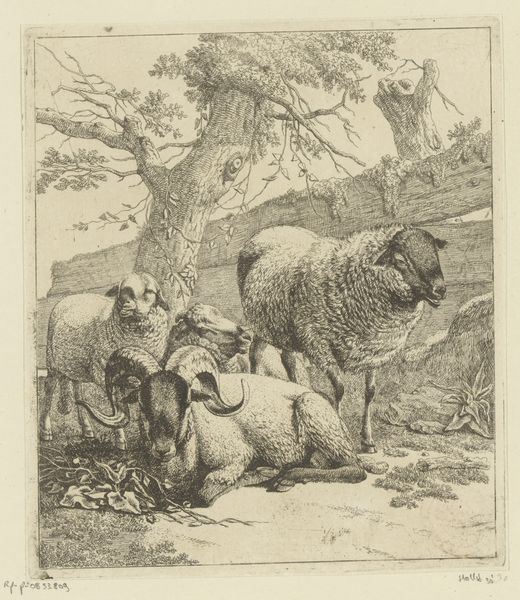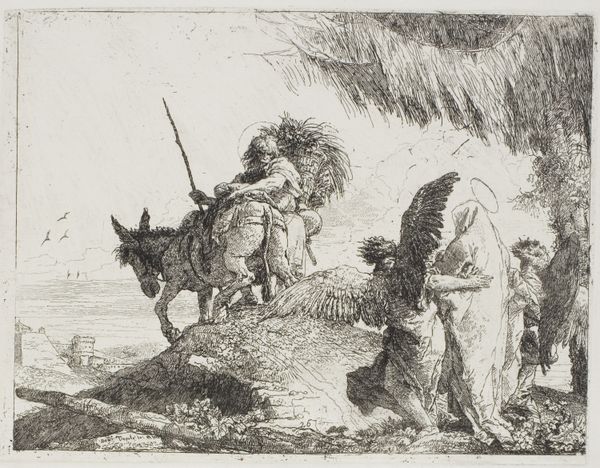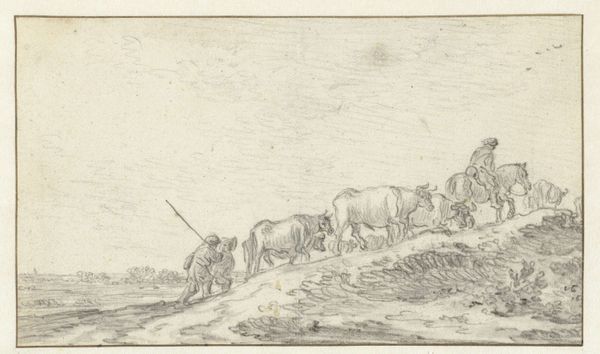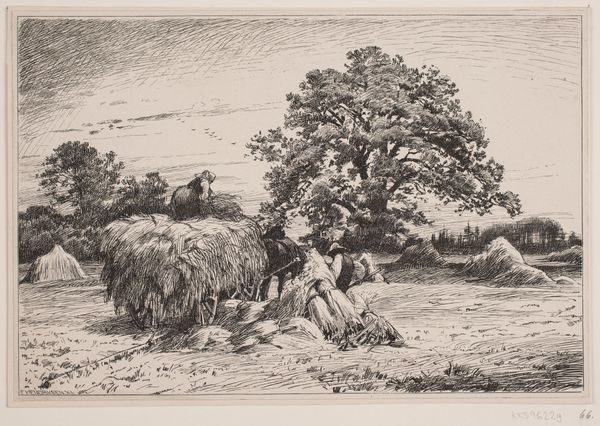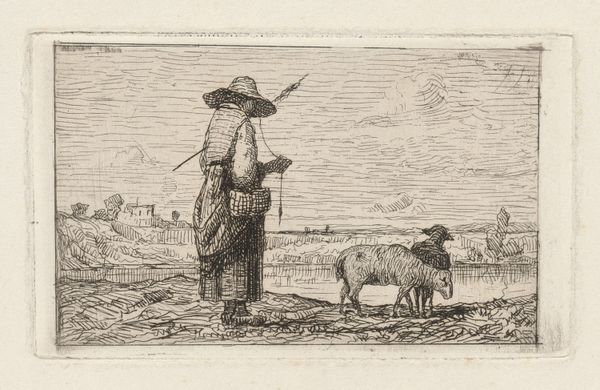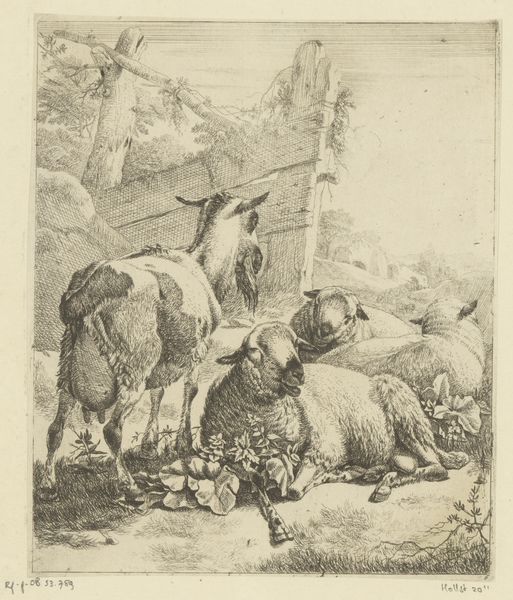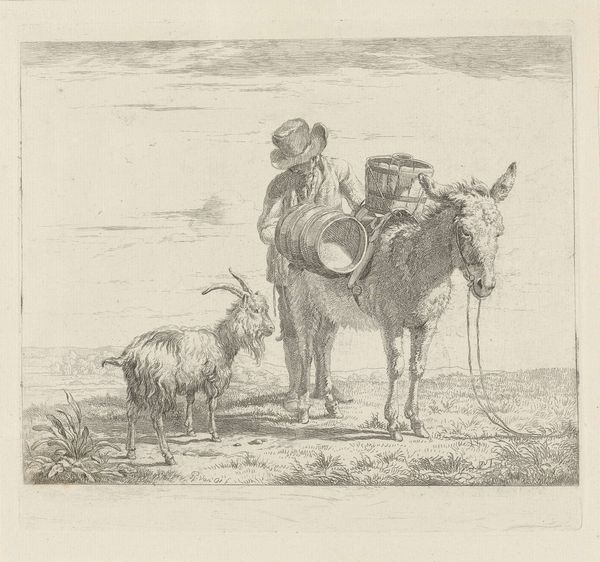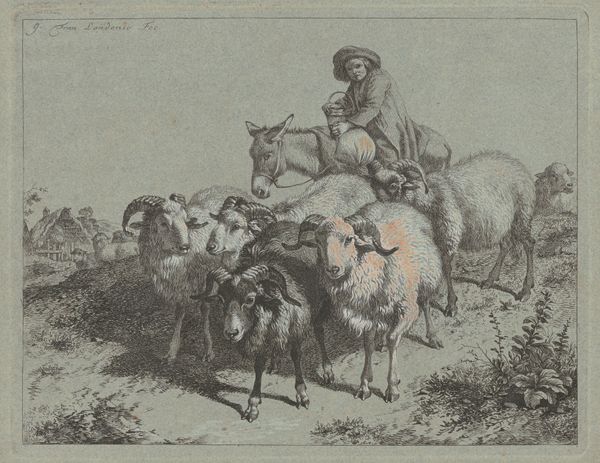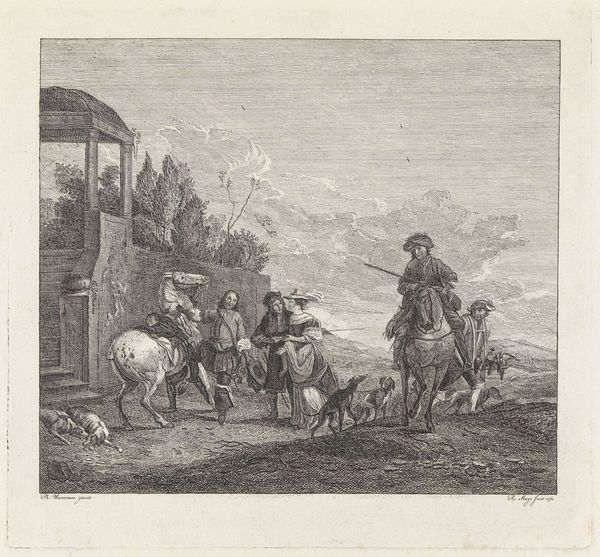
Illustration til Adam Oehlenschlägers digt "De to kirketårne" 1840 - 1843
0:00
0:00
print, etching
#
narrative-art
# print
#
etching
#
landscape
#
figuration
#
romanticism
Dimensions: 105 mm (height) x 149 mm (width) (bladmaal)
Curator: We are looking at "Illustration til Adam Oehlenschlägers digt \"De to kirketårne,\"" an etching by Lorenz Frølich made between 1840 and 1843. Editor: Immediately, I'm struck by the high contrast of this print. It evokes a sense of solitude against a wide-open, pastoral landscape. Curator: Precisely, the medium of etching, and in particular the detailed linework, are critical. Note the texture it provides, building up shadows and forms, creating depth despite the limited tonal range. We can discuss the use of crosshatching to build up areas of dark shading in the figures of the Knight and his steed, for instance. Editor: The equestrian figure looms large over the landscape, seeming to shepherd the sheep along the road to the church. He's certainly framed prominently within the composition. Is the figure meant to reflect some sort of idealized Danish identity in contrast to the two church towers shown at the end of his path, as a visual reference to the titular poem's themes? Curator: Very insightful. Frølich created this print as an illustration for a poem, as the title indicates. By the Romantic period, artists and poets looked towards their own histories for visual symbolism and mythic origins. The poem explores themes of national identity, loss, and the connection to the land. Editor: Interesting! The rider's silhouette is a strong compositional element but doesn't give away a lot about the individual's identity or expression. Yet the scale definitely imbues him with symbolic weight against the architecture of the church steeples on the horizon. It gives an implicit comparison in how their cultural and religious pillars may connect with each other. Curator: The two towers you mentioned stand, symbols that ground the narrative and create the intended resonance of historical consciousness the artist hoped to represent. I think he's carefully arranged these components, landscape and society together. Editor: It makes the image very effective. This reading certainly enriched my understanding of this work; thank you. Curator: A fine exercise, and my pleasure as well.
Comments
No comments
Be the first to comment and join the conversation on the ultimate creative platform.

